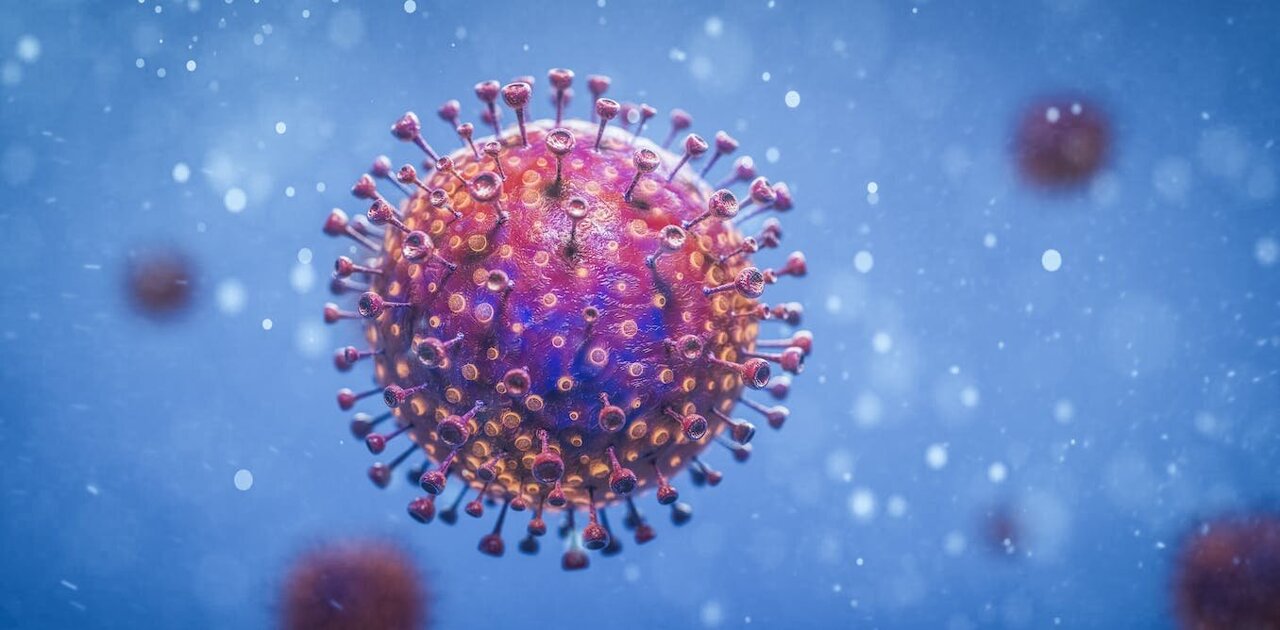XBB和BQ.1:我们对这两个omicron“表亲”的了解
概要
10月下旬,英国卫生安全局为omicron两个新的“孙子”分配了变体名称:BQ.1和XBB。如果将 omicron变体视为一个家谱,BA.2是 BA.5的父代和BQ.1的祖父母。换句话说,BQ.1是BA.5的子谱系。XBB是两个omicron BA.2谱系BA.2.10.1和BA.2.75的混合体。这使得XBB成为BA.2的另一个孙代。因此,XBB和BQ.1是表亲。
研究发现,BQ.1和XBB之间的一个关键区别是受体结合域中突变的数量和位置。这部分蛋白质是病毒感染人体细胞所必需的,也是抗体的目标,而抗体是免疫反应的重要组成部分。
最近的预印本研究表明,受体结合域内的突变可以帮助XBB逃避由COVID疫苗或感染早期的omicron分支产生的抗体,包括亲本菌株BA.2和BA.5。该预印本将XBB视为我们所见过的抗体逃避能力最强的冠状病毒株之一。但不仅仅是受体结合域中的突变可以为XBB 带来优势,XBB在称为N末端结构域的刺突蛋白的另一部分也有突变。初步证据表明XBB在逃避抗体方面也非常强大,这意味着之前感染BA.2或BA.5可能无法保护人体免受XBB侵害。
总体而言,XBB可能比BQ.1及其母体BA.5更具免疫逃避能力,并且可能具有可能增加病毒传播的增长优势。
XBB and BQ.1: what we know about these two omicron ‘cousins’

Mahir KART/Shutterstock
In late October, the UK Health Security Agency assigned variant designations to two new omicron “grandchildren”: BQ.1 and XBB. This means they will be monitored by health authorities, but are not at this stage regarded as variants of concern.
If we think of the omicron variant as a family tree, BA.2 (the dominant strain in the UK in spring of 2022) is the parent of BA.5 (the variant currently dominant in the UK) and the grandparent of BQ.1. In other words, BQ.1 is a sub-lineage of BA.5.
XBB is a hybrid of two omicron BA.2 lineages, BA.2.10.1 and BA.2.75. This makes XBB another grandchild of BA.2. XBB and BQ.1 are therefore cousins.
A hybrid variant is created when two different sub-variants combine and swap parts of their genetic material. We’ve seen this happen with the coronavirus before, indicated by a variant name beginning with an “X” (like XD, XE and XF).
But what can we make of these variants? Are they cause for concern? Let’s take a look first at how they’re spreading.
In the UK, Europe and North America, the prevalence of BQ.1 is rising quickly. Recent data from the UK’s Office for National Statistics (ONS) estimated BQ.1 sub-lineages (including BQ.1 and the similar BQ.1.1) made up 16.7% of infections. In the US, BQ.1 and BQ.1.1 together make up around 35% of infections.
XBB seems to be more prevalent in Asia. While the ONS data suggests it makes up only 0.7% of infections in the UK, in Singapore some 58% of recently sequenced cases are XBB. But whereas sequences of XBB are increasing globally, XBB cases in Singapore now appear to be starting to fall.
Scientists are closely watching several regions where both variants are circulating to see which has the competitive edge.
What are the differences between BQ.1 and XBB?
Omicron variants are successful due in part to several shared mutations in the receptor-binding domain of the spike protein (a protein on the surface of the virus which allows it to attach to our cells).
A key difference between BQ.1 and XBB is the number and location of mutations in the receptor-binding domain. This part of the protein is required for the virus to infect our cells, and is also the target of antibodies which are an important part of the immune response.
A recent preprint (a study yet to be peer-reviewed) suggests that mutations within the receptor-binding domain can help XBB escape neutralising antibodies generated by COVID vaccines or infection with earlier omicron offshoots, including the parent strains BA.2 and BA.5. This preprint regards XBB as one of the most antibody-evasive coronavirus strains we’ve seen.

New COVID variants are popping up all the time. charnsitr/Shutterstock
Cornelius Roemer, a computational biologist in Switzerland, has suggested that a number of these specific changes in the receptor-binding domain can increase the virus’s growth efficiency, or “fitness”. The idea is that more changes allow it to attach to human cells more strongly, giving it a better chance of infecting that cell.
According to Roemer’s model, BQ.1 is a level-5 variant, with five mutations from a list of 21 key mutations which increase SARS-CoV-2’s ability to strongly attach to human cells. XBB is currently the only variant at level 7, with seven of the 21 key mutations.
At the moment this is just an observation and hasn’t been formally published or peer reviewed. However, other scientists have also noted XBB’s apparent growth advantage over other variants.
But it’s not just mutations in the receptor-binding domain that could give XBB an edge. XBB has mutations in another part of the spike protein called the N-terminal domain as well.
The immune system also targets the N-terminal domain with antibodies, and people who have recovered from BA.2 and BA.5 infections mount especially strong immune responses to this part of the spike protein. Preliminary evidence suggests XBB is very effective at evading these antibodies too. This means that previous infection with BA.2 or BA.5 might not protect you from XBB.
Should we be worried about XBB?
By these metrics, XBB is potentially more immune evasive than BQ.1 and its parent BA.5, and might have a growth advantage which could increase virus spread.
The good news is that based on Singaporean data, XBB has been estimated to have a 30% lower risk of hospitalisation compared with BA.5. But we don’t yet have data to support this from other countries, so this might change as XBB becomes more widespread.
It is possible that we could face a double wave of infections in the UK – a wave of BQ.1 infections from Europe and the US, before a second wave of XBB from Asia. And we don’t know if BQ.1 will offer any protection against XBB. Only time will tell whether XBB will outperform BA.5 or BQ.1, or if another variant is waiting in the wings.
Source:
The Conversation
Published on November 16 2022
声明:本站文章版权归原作者及原出处所有。本文章系本站编辑转载,文章内容为原作者个人观点,登载该文章的目的是为了学习交流和研究,并不代表本站赞同其观点和对其真实性负责,本站只提供参考并不构成任何投资及应用建议。
本站是一个学习交流和研究的平台,网站上部分文章为引用或转载,并不用于任何商业目的。我们已经尽可能的对作者和来源进行了告知,但是能力有限或疏忽,造成漏登或其他问题,请及时联系我们,我们将根据著作权人的要求,立即更正或删除有关内容。本站拥有对本声明的最终解释权。








